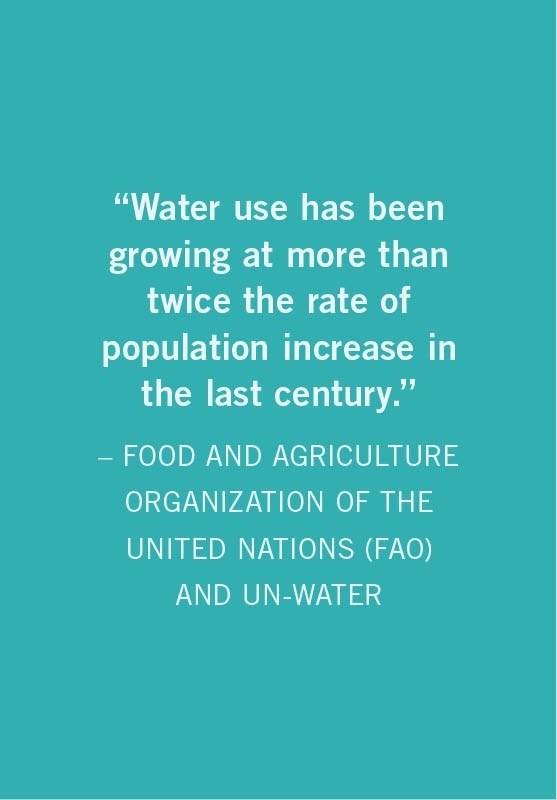Sustainability Issues: Water
Sustainability at GVSU
Researchers Tackle Water Plant Problems With DNA
In a state with more than 11,000 inland lakes, managing aquatic plants in Michigan is both big business and a sensitive environmental matter. Researchers at Grand Valley’s Robert B. Annis Water Resources Institute in Muskegon are working on a cutting-edge process to help save lakes from environmental damage, save native plants from unnecessary removal, and save money for people who have economic interests in lakes.
The process is based on DNA testing of a particular aquatic plant called a watermilfoil that comes in dozens of varieties. Some are native to Michigan waters, while others are invasive.
“Aquatic plants are the basis of the food chain and create a lot of the structure in a lake as they grow from the bottom to the surface,” said Ryan Thum, a former Grand Valley researcher who led the project. Thum and a group of students, including graduate student Syndell Parks, have been working to determine specific herbicide treatment plans.
[1439472756].jpg)
AWRI's research and education vessels offer students hands-on science.
GVSU Initiatives
Annis Water Resources Institute (AWRI) Located in Muskegon, AWRI is committed to enhancing and preserving water quality in the Great Lakes region. It is a leading research center for the region on issues that affect environmental legislation and regulation, and it has an education and outreach program that has served more than 100,000 passengers aboard its biodiesel-fueled research vessels.
Reducing impermeable surfaces Impermeable surfaces increase water runoff. Grand Valley has made efforts to decrease impermeable surfaces on its campuses with green roofs; permeable pavement, sidewalks, and courtyards; and a 9,000 square-foot rain garden near the Kelly Family Sports Center.
Green Housekeeping Policy Through the use of nontoxic and biodegradable cleaners, this policy aims to reduce exposure to hazardous chemicals while protecting the environment.
Water conservation Water consumption has been reduced with waterless urinals, reduced-flow showerheads, low-flush toilets, irrigation rain gauge, and going trayless in campus dining.
Storm water retention pond The rain garden next to the Kelly Family Sports Center feeds into a storm water retention pond to reduce runoff and erosion of the ravines. The water is then used to irrigate athletic fields, which reduces Grand Valley’s water costs and its load on the municipal sewer system.

Take Action
Take note of what you’re putting down the drain The soaps and other products we use in combination with our water ultimately end up in our water supply. Choose all-natural and biodegradable dish soaps, laundry detergents, hand soaps, shampoos, conditioners, body soaps, and household cleaners.
Reduce the amount of water you consume Take shorter showers, never leave the water running when brushing your teeth or doing the dishes, and only run full loads of laundry and dishes. You can also adjust your toilet to be low flow, water plants and your lawn in the early morning or evening, and install low-flow faucet and showerheads.
[1439473652].jpg)
Reduce your impact on storm water Pick up pet droppings; wash your car on the grass; install a rain barrel; plant a rain garden; do not use toxic chemicals in your home, on your lawn, or in the garden; and check your car for leaks.
